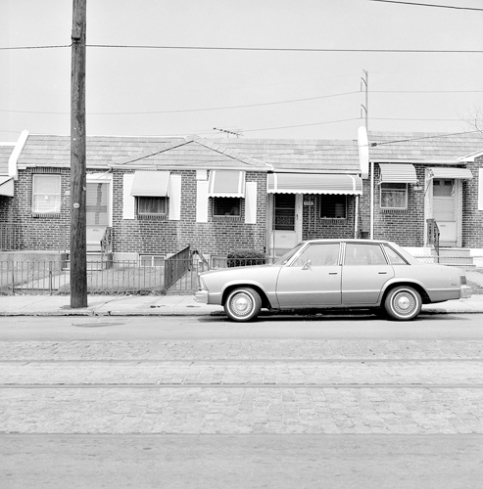The arrival of the “American Monuments” book, with photographs from the 60s and early 70s has me thinking about my memories from that period, my childhood. I was born in 1957, my first memories are from the 1960s, and those memories are all in color, a little grainy and sharp and maybe faded, but always in color. I remember seeing photographs from the 1930s, how old everything seemed—the cars, the clothes, the way people carried themselves, all in black and white. It’s only been recently that I’ve realized that the distance between the 30s and the 60s is only thirty years—the distance between my father’s childhood and my own.
I’ve been photographing since 1977—thirty five years now—and recently began thinking about my own son, how things in my lifetime must seem so old to him—especially since I’ve mostly photographed in black and white. Looking at the Friedlander monuments made me remember some photographs I made shortly after moving to Philadelphia, in the spring of 1981, after I bought my first medium format camera, a Bronica S2. The camera was intended to look like a Hassablad, but the camera was heavy and had a huge mirror that slammed into the top of the camera with sufficient force to vibrate the camera, and the pressure wave would rotate the focus ring on the lens. But at fast enough shutter speeds, the Nikon lens was sharp. I was a graduate student, and so broke after buying the camera that I could afford a little film, but not paper, so I never even made contact prints of most of the pictures from the first couple months. They’ve sat in a box for 31 years, untouched.
Of course, these pictures are in response to Atget (too simple for Friedlander)—what strikes me is how square and forward they still feel—I’m not sure I bring the same energy to the frame anymore—I’m not sure I could make these pictures now.
Later that spring, I saw the Robert Adams show “The New West” show at the Philadelphia Museum—an eye-opening experience for me—one that changed the way I saw the city that was my new home.
The young begin by imitating, by borrowing, by stealing from those that came before—it’s the way one learns what is possible, what photography can do. Now, looking back at these images—I know who I was trying to steal from—but these pictures are mine. Philadelphia was not Paris or Denver–I am not Atget or Adams–but their visions, their pictures helped me find a few of my own, a way of making the strange city I found myself in something closer to home.




